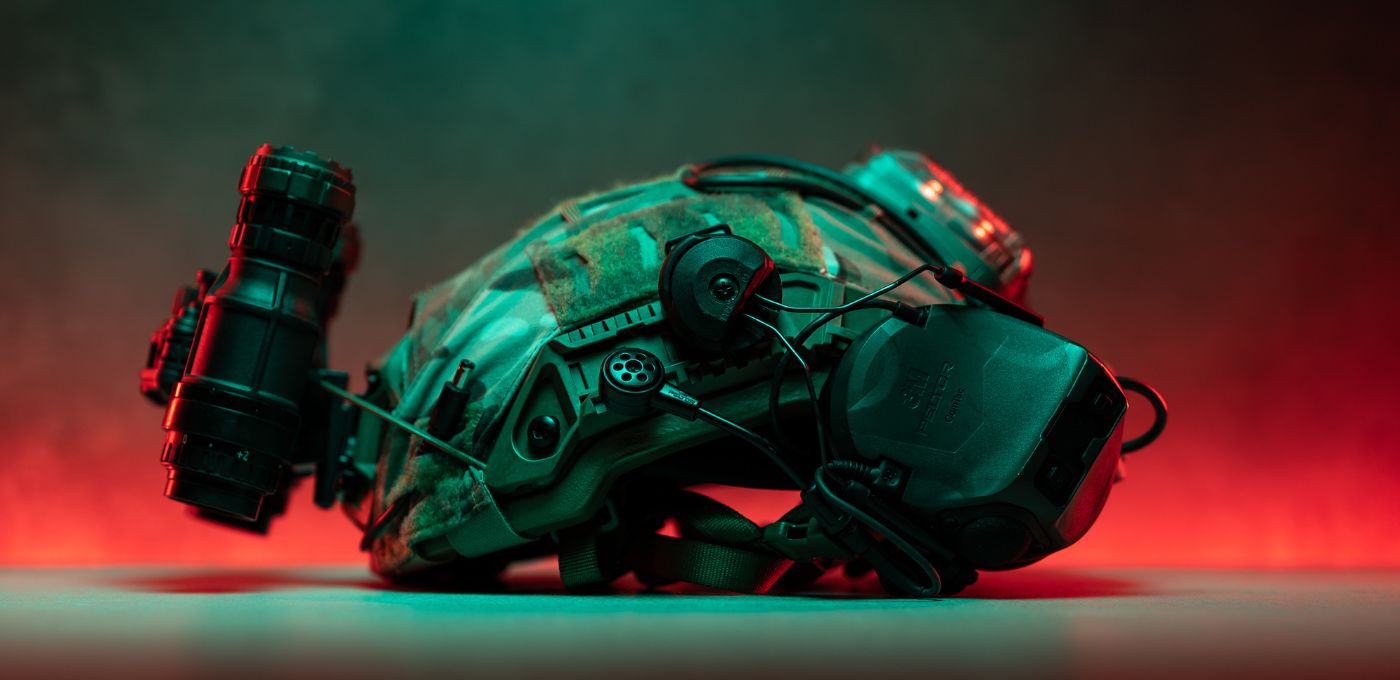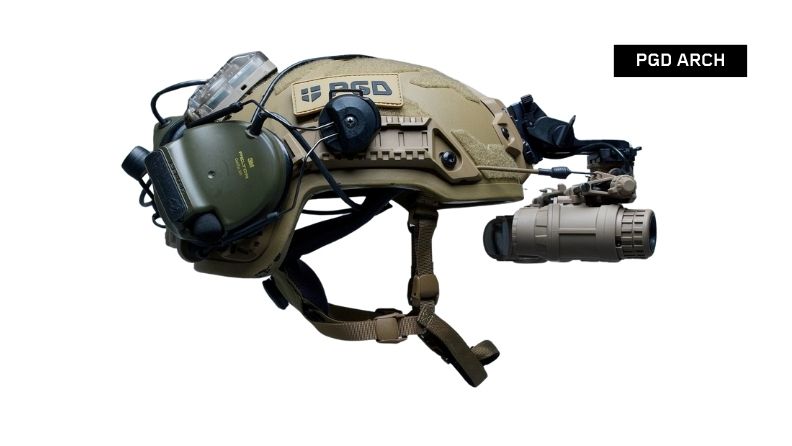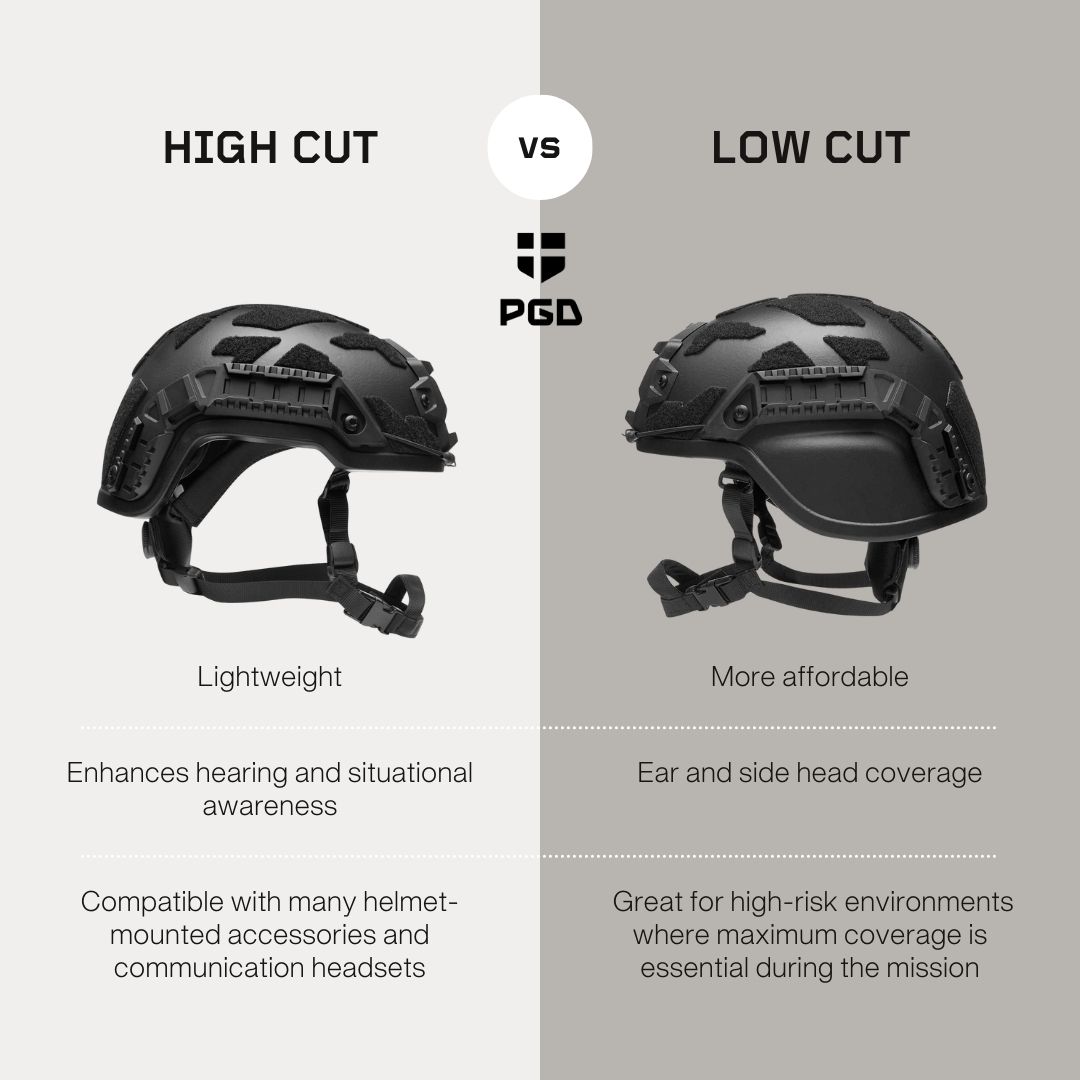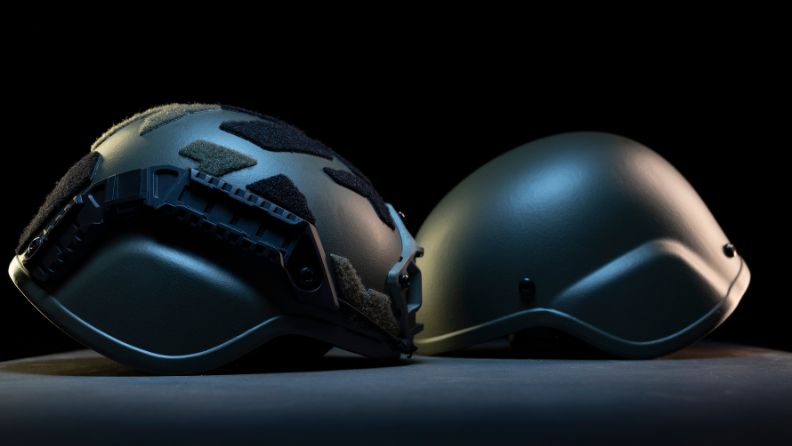
Ballistic materials used to make a bulletproof vest


In this article we focus on our two primary options: High cut and low cut PGD helmets. Let’s break down what you need to know, so you can make the best choice for your situation.
First things first. What’s the main difference between high cut and low cut helmets? It really comes down to how much of your head and ears that are covered:
 |
 |
Choosing between these two options is all about finding the right balance between protection, comfort, and functionality.
Now we dive deeper into the separate helmet cuts.
Our high cut helmet PGD ARCH GEN3 is designed for operators who prioritize communication, mobility, and situational awareness. This helmet cuts away around the ears, making room for e.g. headsets, hearing protection, or other essential communication gear.
What are the advantages of a high cut helmet? It is:

With those advantages in mind a high cut ballistic helmet is very often best for special forces and tactical teams. It could also be high-speed missions and urban operations in general. But overall high cut helmets are often chosen for roles where communication and mobility are critical.
Before choosing a high cut helmet you need to consider the level of protection. A high cut helmet:
Our low cut helmets PGD MICH, PGD MICH2000 and PGD PASGT offer full side coverage, including the ears. These helmets are ideal when maximum protection is required, especially against fragmentation and shrapnel.
What are the advantages of low cut helmets?
To summarize these advantages mentioned above mean that low cut helmets often provide a great level of protection for military personnel in high-risk combat zones. You would almost always see riot control groups and law enforcement use this type of helmet. Most importantly this helmet is suitable for situations where maximum ballistic and fragmentation protection is required.
Since it is a constant tradeoff between protection and mobility, a low cut helmet does have its disadvantages:
And now you would probably ask:
When you are deciding between a high cut and low cut helmet, ask yourself these following 5 questions:
1. What kind of mission am I preparing for?
2. Do I need to wear communication gear or hearing protection?
3. How long will I be wearing the helmet?
4. How much side protection do I need?
5. What is my budget?

At some point you probably face the challenge of finding the right balance between protection and mobility. You want the helmet that offers enough coverage to keep you safe, but you also need to stay agile and aware of your surroundings. The reality is, it’s always a trade-off. Understanding this balance is key to picking the right helmet for the job.
You need to know that no matter which cut you choose, all PGD helmets are designed to meet the highest ballistic standards. Both our high cut and low cut helmets are built from advanced materials like aramid fiber from Kevlar, which is made by the leading European ballistic fiber manufacturer Dupont.
Our helmets offer greater protection than the standard NIJ standard 0106.01 with an extremely low back face deformation. Furthermore they offer a fragmentation protection of 660 m/s according to STANAG 2920. They are designed to withstand some of the most advanced handgun threats in the world. PGD ballistic helmets are engineered to meet the highest industry standards, ensuring you get quality protection without unnecessary weight.
Our helmets also come with:
If you want you can read more about our ballistic helmets and how our ballistic helmets are manufactured.
At PGD, we know that there is no one-size-fits-all answer. Choosing the right helmet cut is about more than just looks – it’s all about staying safe, effective, and comfortable in the field. It’s also about making sure your headgear works with the rest of your equipment so you can do your job effectively.
Whether you go for the streamlined, communication-friendly high cut, or the fully protective low cut, you’re getting a helmet built to perform when it counts.
If you’re unsure which option is right for you, reach out to our team. We’re here to help you choose the helmet that best fits your mission and your needs.
